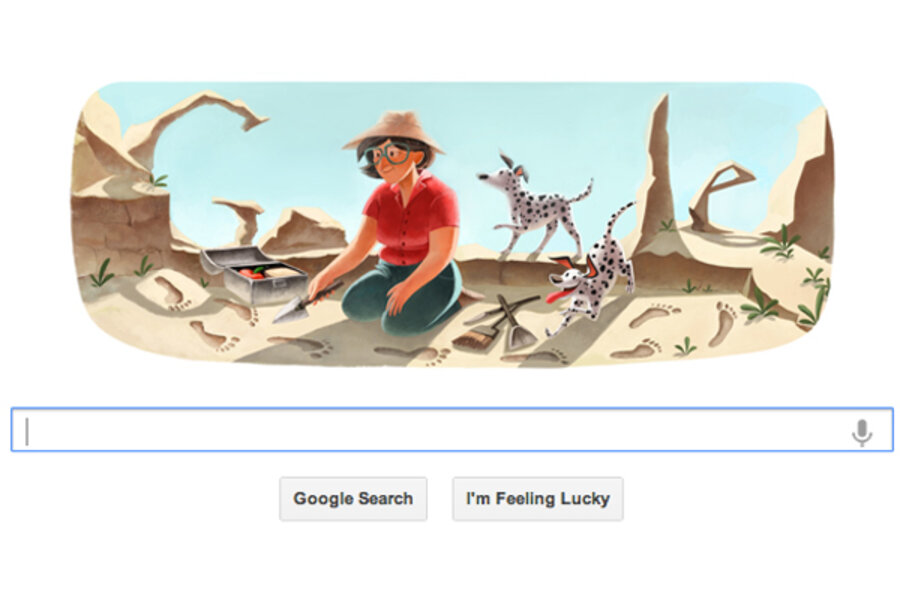Remembering Mary Leakey, the 'grande dame of archeology'
Loading...
The Google homepage today depicts a woman in a sun hat, trowel in hand, kneeling in front of an excavation site – in the background, the Google logo is written out in teetering spires of sand.
The image is an homage to the eminent British archaeologist and paleoanthropologist Mary Leakey, who was responsible for one of the greatest discoveries of the last century: a 1.75 million year-old hominid skull unearthed in Africa.
As the New York Times noted in 1996, the year Leakey died, this discovery and others "awakened the world to Africa's primary place in human origins with their spectacular discoveries and increasingly pushed back the time of those origins much earlier than had been thought. Until then, many scientists still believed the human birthplace would be found in Asia."
Leakey was born in London a century ago today, to Cecilia Marion Nicol and Erskine Edward Nicol, a landscape painter. According to the website of the Leakey Foundation, she showed artistic talent from an early age. She also traveled with her family across Europe and to sites such as the caves Pech Merl in Dordogne, in Southwest France. By the time she was 17, the Leakey Foundation reports, she was already working as an illustrator on digs in the UK.
In the mid-1930s, she was introduced to Louis Leakey, an older archaeologist. Louis Leakey wanted Mary to illustrate a book of his; they fell in love and married in 1937.
In subsequent years, Leakey traveled frequently across the Serengeti, where she and Louis led a number important excavations. The find that made Mary's name came in 1959, with the discovery of the Zinjanthropus bosei fossil – later reclassified as Australopithecus boisei – in Olduvai Gorge, Tanzania. The fossil, a mostly-intact cranium, helped scientists better understand human evolution, and also the importance of East Africa to the origins of humanity.
A string of successful – and well-funded – digs followed, including a complete Proconsul africanus skull and, per the Leakey Foundation, "the remains of 25 early hominids and an array of 15 new animal species."
''She was one of the world's great originals,'' Dr. Alan Walker, an anatomist at Pennsylvania State, told the Times. ''Untrained except in art, she developed techniques of excavation and descriptive archeology and did it all on her own in the middle of Africa. It was an extraordinary life.''
Leakey died in December of 1996, in Nairobi, at the age of 83. To quote from a biography published in 1995, she had earned her reputation as the ''the grande dame of archeology."
For more tech news, follow us on Twitter: @CSMHorizonsBlog







